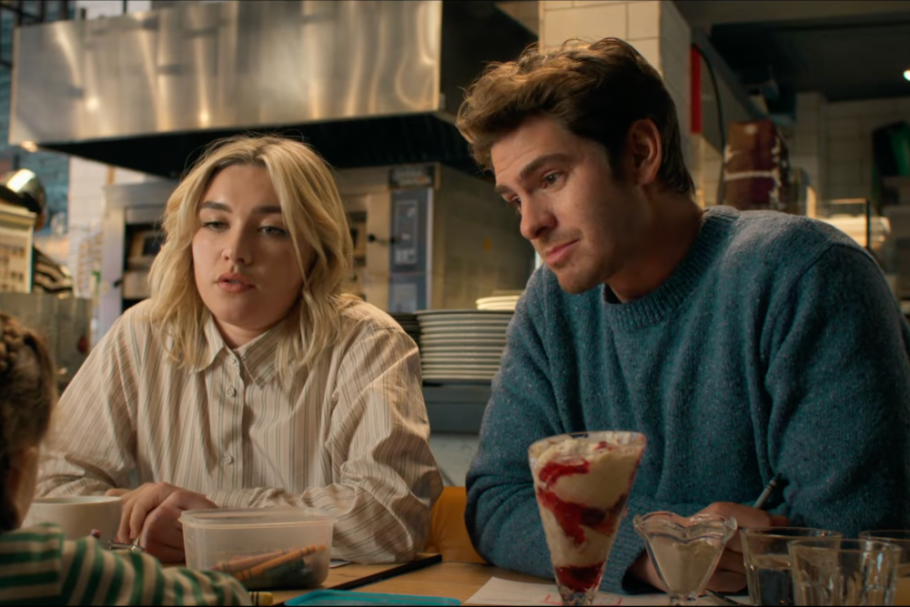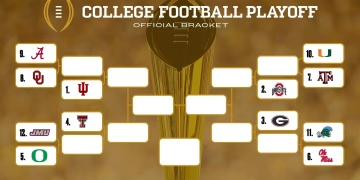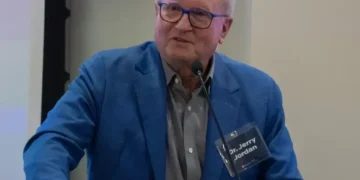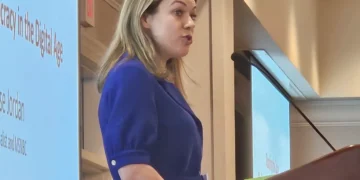
Cruelly deemed a “Romance/Comedy” by Google, “We Live in Time” is director John Crowley’s bittersweet tale of the years after a serendipitous encounter that causes two strangers’ worlds to collide.
The film, using a series of time jumps, starts by abruptly delivering tragic news to the audience. Almut, played by Florence Pugh, has relapsed and is sick with a rather aggressive form of cancer. In doing this, Crowley achieves an effect similar to that of a roller coaster: You see the big drop coming in the distance, but you are helpless in avoiding it. All you can do is hang on and ride it out.
Almut is a chef with ambitious dreams and an impressive background when she first meets Tobias, played by Andrew Garfield. Tobias, on the other hand, is a recent divorcée and employee at a breakfast cereal company.
Tobias does not appear to be deriving much joy from his life until, out of nowhere, fate and Almut’s car strike him. With one chance encounter, Almut changes Tobias’ mundane existence forever.
As the story progresses, the audience learns about the triumphs and tribulations the couple has endured together in a backwards manner. Crowley first shows the effect, then allows the audiences to be privy to the cause.
The film concludes with a rather divisive ending. Some viewers are left thoroughly unsatisfied, whereas others believe it ended exactly as it should. I fall into the latter camp, but that does not mean I left the theater content with my choice to watch this film.
The story the film tells is beautiful. It is one of perseverance, grief, relationships and legacy. I would argue with its categorization as a “romance” movie though. I think this label is an injustice. Although the story of Almut and Tobias was a driving and necessary force, the film was so much more.
Therefore, I argue that “romance” is weakly being used as a synonym for the word “love,” which encompasses a much broader aspect of our, and the characters’, lives. Almut’s love for her career, the couple’s love for their daughter and self-love are the real subjects audiences are forced to grapple with.
My only critique about the structure of the film concerns the way Crowley chose to do the time cuts. There is never any blatant indication of how far forward or backward the audience is being transported in the lives of Almut and Tobias.
The only subtle tells are Almut’s hair and makeup and the occasional presence of their daughter. In her younger years, Almut sports a heavier eye-liner look and short bangs. As she ages, her hair appears longer and her make-up look of choice is a very subtle one.
Perhaps Crowley chose to start somewhat near the end and chaotically spring back and forth at will to mimic the way Almut is analyzing her life choices as she is forced to make the biggest one yet: to pursue treatment or not.
Alternatively, Crowley could have used this method to further emphasize that our lives exist in each moment. There is not one pinnacle event that defines us, but rather life happens every second someone is alive — hence, “we live in time.”
While I had complaints with the film’s structure, they do not hold a candle to the grievances I have with the emotional effect of this film. There was not a dry eye in the theater after its conclusion. If you are in need of a gut-wrenching tear release, I could not recommend this film more.
While the film was released on Friday, Oct. 11 in much of the United States, it did not make it to Oxford until two weeks later on Friday, Oct. 25. Currently, the Malco Oxford Studio Cinema is the only location in Oxford showing the film. On Wednesday, Jan. 1, 2025, StudioCanal will distribute the film throughout the United Kingdom.




































